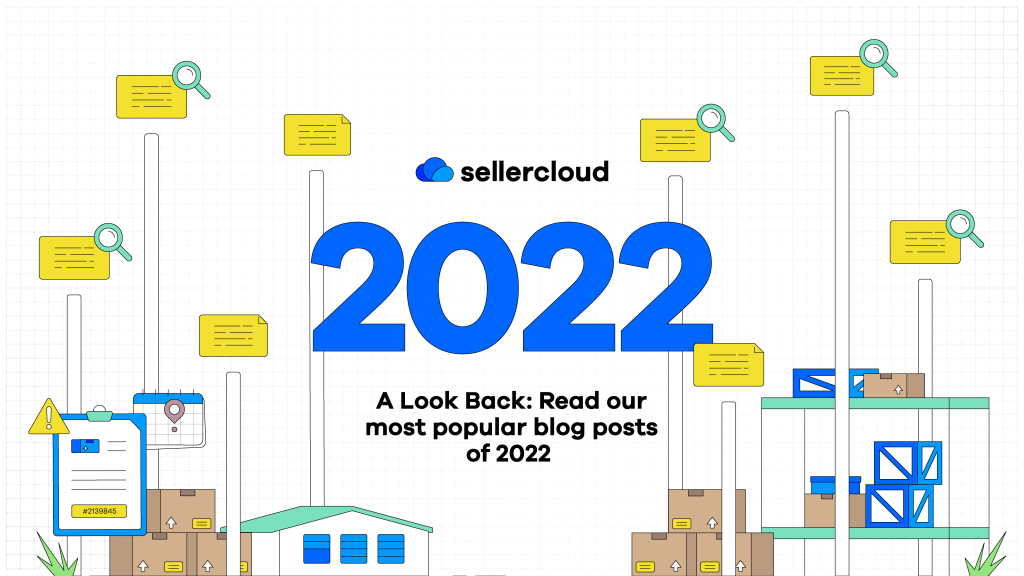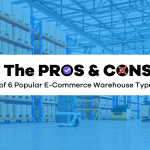
We already said goodbye to 2022, and now, to officially welcome 2023, we want to take a moment to review our most popular blog posts from the past year.
Our top 10 most-read articles cover many topics, from the top ecommerce terms you need to know as an ecommerce seller to various insights that can optimize your operations and help you scale.
Whether you’re a new or experienced seller, these posts will provide valuable tips for improving your workflow and growing your ecommerce business.
10. How to Reduce Your Ecommerce Cost Per Unit and Increase Profits
The article explains the two types of costs you have—fixed costs and variable costs. It also offers suggestions for reducing costs, such as optimizing hiring and retention practices and revamping warehousing infrastructure.
Read the article here.
9. Amazon’s Growing Air Fleet and Hubs Add Even More Value to MCF
As Amazon Air’s fleet continues to grow, so does the value of Amazon’s fulfillment offerings. The article highlights that MCF is becoming an increasingly viable option for omnichannel ecommerce sellers looking for a convenient, speedy, and reliable fulfillment partner.
Read the article here.
8. Eco-friendly Ecommerce Is Both the Responsible and Marketable Move
Now more than ever, customers are more likely to show loyalty to businesses committed to sustainable and eco-friendly practices and are willing to pay more. Environmentally-conscious ecommerce is not just the right thing to do but also a potentially lucrative marketing opportunity for brand growth.
Read the article here.
7. The White-Label Promise of Walmart’s Last-Mile Delivery Service Matters
Walmart’s last-mile delivery service will be available to 90% of American Home Depot customers. This increasing trend of retailers with established fulfillment and warehousing infrastructure commercializing last-mile delivery can benefit ecommerce sellers by offloading fulfillment responsibilities and costs.
Read the article here.
6. Decentralized Fulfillment is Becoming the Ecommerce Gold Standard
Decentralized fulfillment is a method of spreading inventory across multiple locations to fulfill orders. It can provide benefits such as better shipping speeds, greater geographic reach, and reduced cost of goods sold (COGS). Read the article to learn how you can take advantage of decentralized fulfillment.
Read the article here.
5. Are You Taking Advantage of the Easiest Way to Ship Internationally
The Global Advantage Program (GAP) makes shipping international ecommerce orders as easy as shipping domestic ones. By printing a GAP label, the package can be shipped to a GlobalPost Shipping Center in the US, where all required international shipping labels and customs forms are automatically added. This allows sellers to fulfill international orders by shipping to a domestic location and eliminates the need to prepare customs forms.
Read the article here.
4. Set the Omnichannel Ecommerce Goals that Matter (and Reach Them)
Goal setting is important for an omnichannel ecommerce business. To set the goals that matter, we suggest using the SMART (Specific, Measurable, Assignable, Realistic, and Timely) method, focusing on two types of goals: Urgent E-Commerce Goals and E-Commerce Growth Goals.
Read the article here.
3. Post-Holiday Remarketing Can Help Overcome Q1 Ecommerce Slowdowns
The most profitable customers to market to are repeat customers, especially those who made their first purchase during the holiday season. An effective remarketing strategy, targeted advertising, and a focus on former customers can help overcome the Q1 sales dip.
Read the article here.
2. 53 Essential Ecommerce Acronyms You Must Know and Understand
Whether you are an ecommerce newbie or a seasoned expert, here’s a helpful ecommerce cheat sheet with 53 essential ecommerce acronyms and terms to help you run a more efficient online sales business.
Read the article here.
1. Critical Vendors May Be Your Brand’s #1 Source of Third-Party Risk
Ecommerce businesses have a mix of critical and non-critical vendors. Critical vendors are partners who are so instrumental to the business that if they fail to live up to expectations, they would cause significant harm to the business. You need to identify your critical vendors and create a risk management plan focusing on cybersecurity and financial and operational risk management.
Read the article here.




